Olive Oil vs. Extra Virgin Olive Oil
Are you in search of that one ingredient that can transform your cooking from mundane to extraordinary? Look no further than the exquisite elixir of the Mediterranean – olive oil.
Olive oil is a staple in many kitchens around the world, and it comes in various forms. Two of the most common types are olive oil and extra virgin olive oil. While they might sound and seem similar, there are significant differences between the two in terms of quality, flavor, and culinary applications. However, what’s common is the benefits they offer.
Olive oil contains monounsaturated that improve cholesterol levels and reduce the risk of heart disease. It’s also packed with powerful antioxidants like vitamin E and polyphenols, which help fight inflammation and protect your cells from oxidative stress. In a world where wellness is paramount, olive oil is your ally on the journey to better health.
Historical Roots
Olive oil has a history that dates back to ancient civilizations. It is believed to have been first produced in the Mediterranean region around 6,000 years ago. Olea Europaea, the olive tree, is native to this area and has been cultivated for its fruit, which contains the precious oil – Olive Oil. The ancient Romans, Greeks, and Egyptians all valued olive oil for various purposes.
The Greeks, in particular, had a deep appreciation for olive oil. It was a significant part of their daily lives, not just as a food source but also for religious and medicinal purposes. They even used it as a form of currency in some cities. The Greeks also played a pivotal role in spreading the cultivation of olive trees to other parts of the Mediterranean.
Cultural Significance
Olive oil is not just used for culinary purposes. It holds a special place in the tradition and culture of Mediterranean countries. For instance, in Italy and Greece, the olive tree is often seen as a symbol of prosperity, peace, and wisdom. Olive branches were used in ancient Greece to signify peace, a tradition that holds to this day. Moreover, olive wreaths are awarded to Olympic Games winners.
Olive oil is used in various dishes, from roasted vegetables to salads and pasta. The concept of the “Mediterranean Diet” has gained global recognition for its health benefits, largely due to the addition of olive oil as a main fat source. This diet is linked to lower rates of certain cancers, heart disease, and stroke.
Types of Olive Oil Processes
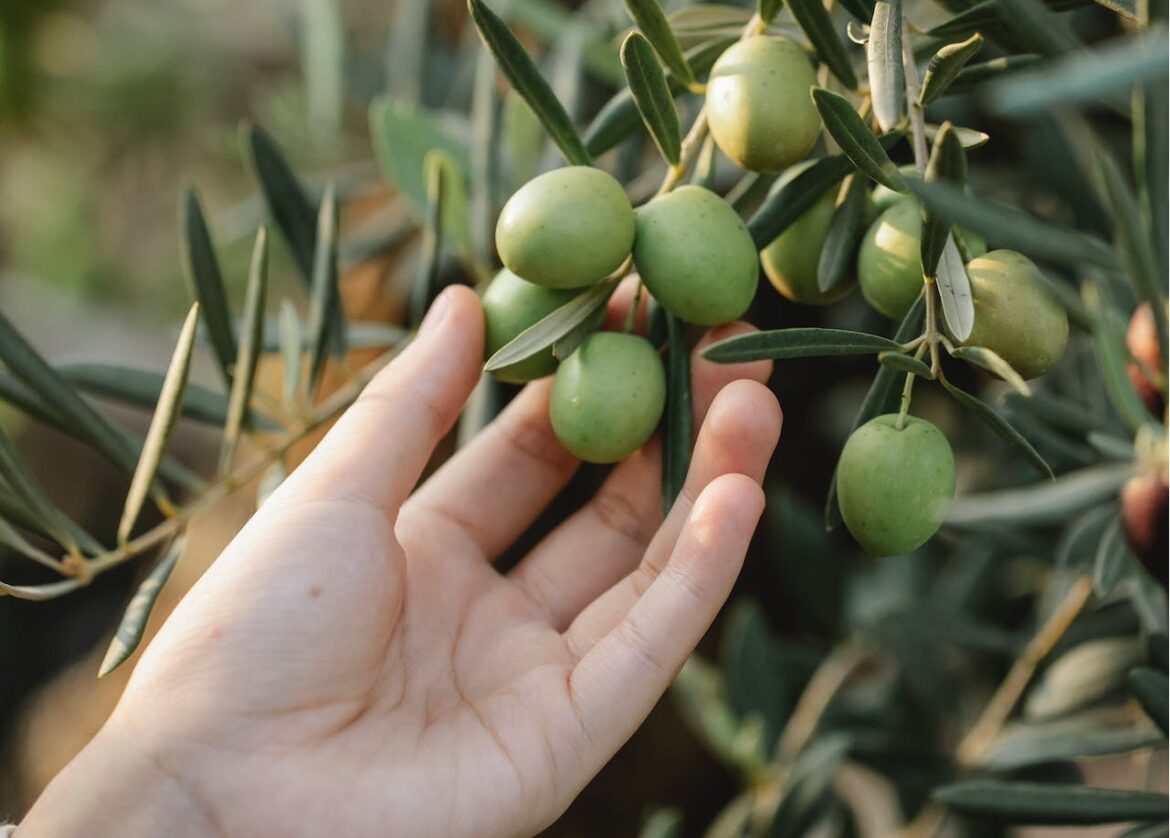
Refined Olive Oil
Often labeled as “pure olive oil,” refined olive oil is the most common type of olive oil available in the market. It is the result of a process that involves refining and filtering the oil to remove impurities and undesirable components. Here are the key characteristics and production process of refined olive oil:
Refined olive oil is typically made from lower-quality olives that are not up to the standards of making virgin or extra virgin olive oil. This oil’s refining process involves filtering and sometimes even chemical treatments to neutralize its taste and aroma.
Unrefined Olive Oil
Often labeled as “virgin” or “extra virgin” olive oil, unrefined olive oil is known for its superior quality and distinct flavor profiles. Here’s what you need to know about it:
Unrefined olive oil is obtained through mechanical means, such as pressing or centrifugation. The process does not involve the use of excessive heat or chemicals. It is typically made from high-quality olives.
Cold-Pressed Olive Oil
This oil comes under unrefined olive oil and is highly regarded for its extraction method, which ensures that the oil retains its natural flavors and beneficial compounds. Following are its key characteristics:
Cold-pressed olive oil is made using a hydraulic press that extracts the oil from olives at a low temperature, typically below 27°C (80°F). This gentle process helps preserve the oil’s flavor and nutritional content.
Understanding Olive Oil
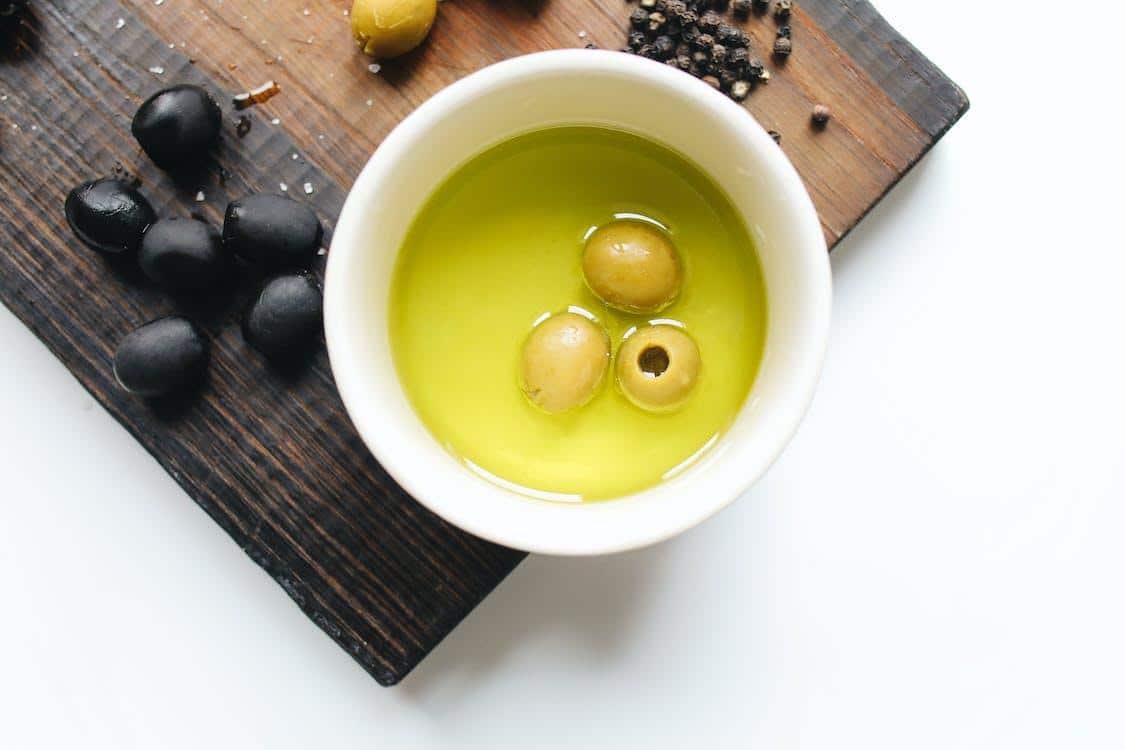
Olive oil, is simply called “olive oil” in its pure form. It is derived from pressed olives and is known for its versatile culinary applications and health benefits. Let’s explore the key characteristics of olive oil.
Production Process
- Olive oil is made from a blend of processed and cold-pressed olives.
- The oil undergoes two processes – refining and filtering process that involve heat and chemicals.
- These processes remove flaws and impurities in the oil, making it more stable and suitable for cooking.
Taste and Aroma
- Olive oil has a neutral and mild flavor.
- It is a good option for cooking when you want to preserve the dish’s natural flavors.
Smoke Point
- Olive oil’s smoke point typically ranges from 175°C to 210°C (350°F to 410°F). This may vary based on the refining process.
- This high to moderate smoke point makes it suitable for deep-frying and grilling at lower to medium temperatures.
Nutritional Profile
- 1 tablespoon of olive contains 119 calories
- Olive oil contains monounsaturated fats, such as oleic acid, which is associated with numerous health benefits for the heart, brain, and digestive system.
- It also contains anti-inflammatory compounds and antioxidants that support overall health.
Nutritional Value
- The refining process olive oil undergoes slightly lowers its nutritional content compared to EVOO.
Understanding Extra Virgin Olive Oil
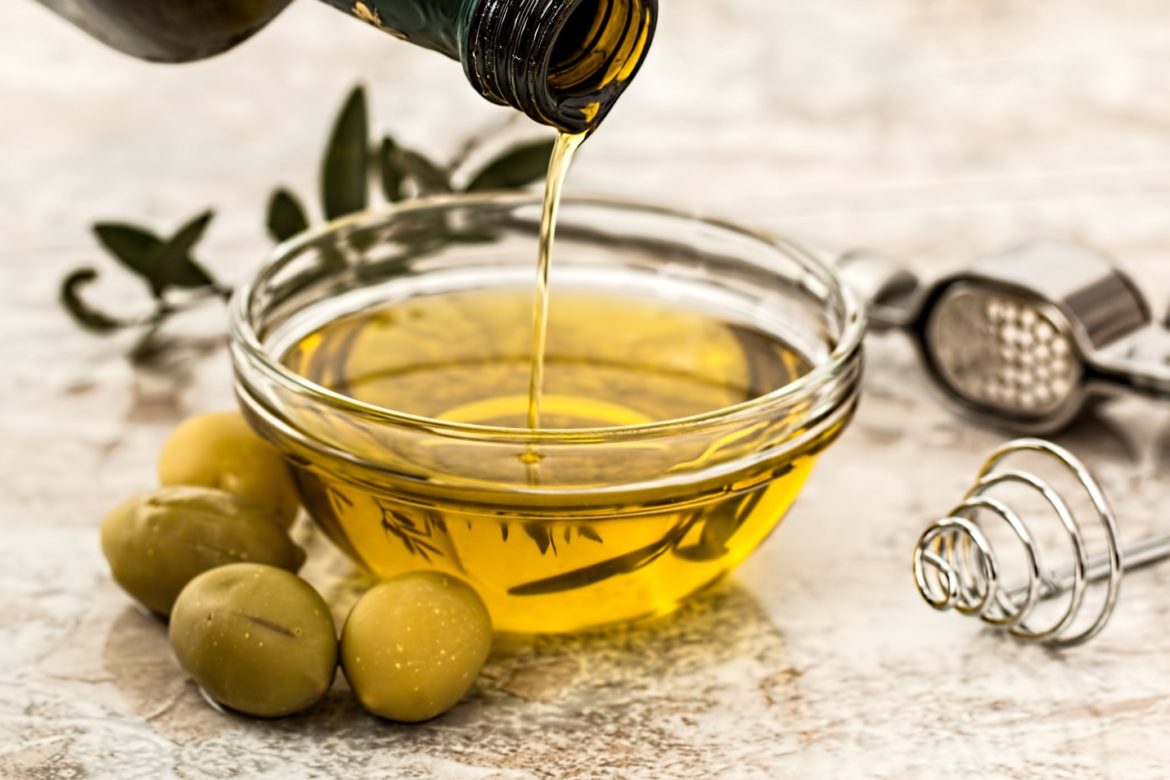
Extra virgin olive oil (EVOO) is considered the gold standard of olive oils. It is renowned for its superior quality, exquisite flavor, and health-promoting properties. Let’s take a closer look at the characteristics of EVOO:
Production Process
- EVOO is made from the cold pressing of green and black olives without high-heat processing and any chemical treatments.
- This method preserves the natural flavors, aroma, and nutrients of the olives.
Taste and Aroma
- EVOO boasts a robust, fruity flavor with hints of bitterness and pepperiness.
- The distinct taste of EVOO varies based on the type of olives used and the region it is made in.
Smoke Point
- EVOO has a lower smoke point compared to pure olive oil, which is around 190°C (375°F).
- EVOO should not be used for deep-frying as it loses all its flavor. It is idea for drizzling over salads and finished dishes.
Nutritional Profile
- EVOO is rich in monounsaturated fats, phytonutrients, and antioxidants.
- Its unrefined nature ensures that it retains a higher concentration of these beneficial compounds.
Nutritional Value
- EVOO is one of the healthiest oils because of its high concentration of monounsaturated fats, making it a superior choice in terms of nutrition.
Why You Shouldn’t Use Extra Virgin Olive Oil for Cooking
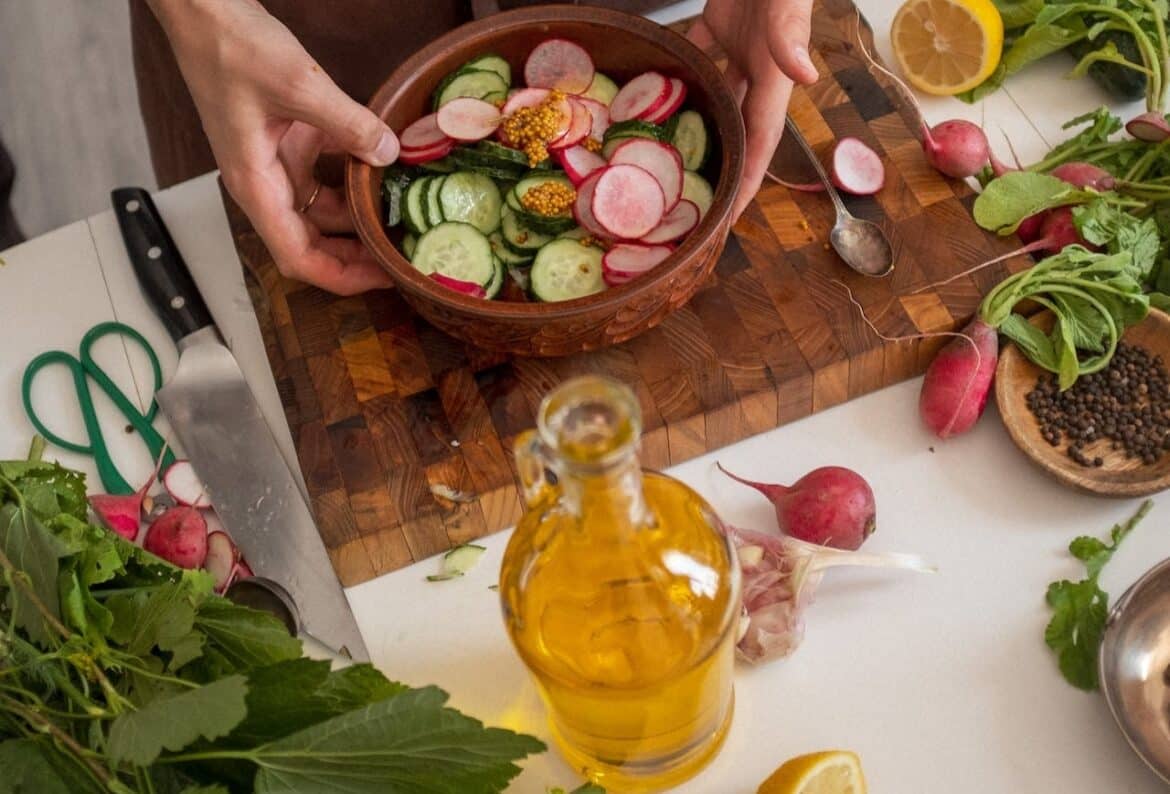
Low Smoke Point: EVOO has low smoke point, which is between 190°C and 210° C (375°F – 410°F). An oil’s smoke point refers to the oil’s temperature at which it breaks down and produces smoke. At this temperature, the oil releases harmful compounds and develops an unpleasant taste. For comparison, oils like canola, grapeseed, or safflower have higher smoke points, making them better choices for high-heat cooking.
Flavor Alteration: EVOO is valued for its rich, fruity, and sometimes peppery flavor. When exposed to high heat, especially frying or prolonged cooking, this delicate flavor can deteriorate. The heat can cause the oil to lose some of its nuances and even develop a slightly bitter taste.
Nutrient Degradation: Extra virgin olive oil contains various beneficial compounds, such as polyphenols and antioxidants, that offer health benefits, such as improved heart health and reduced inflammation. Unfortunately, exposing EVOO to high heat can lead to the degradation of these compounds, diminishing its potential health benefits. To fully enjoy the health advantages of EVOO, it’s best to use it in recipes that don’t involve subjecting it to high temperatures.
Common Questions About Olive Oil
How Should I Store Olive Oil?
Store olive oil in a dark, cool place to preserve its quality and flavor. Keep it away from direct sunlight and heat, as these can cause it to deteriorate. Seal the bottle tightly after each use to minimize exposure to air. While olive oil does not turn rancid that easily, it must be used within two years of purchase.
Can Olive Oil Go Bad?
When exposed to oxygen, olive oil can turn bitter in taste. Signs of rancid olive oil include a sour or unpleasant flavor. Usually, opaque plastic or dark-colored glass bottles are used to store olive oil.
What Are Some Common Culinary Uses for Olive Oil?
- Drizzling over salads
- Making salad dressings
- Sautéing vegetables
- Dipping bread
- Grilling or roasting vegetables and meats
- Enhancing the flavors of pasta dishes
- Marinating seafood and meats
- Frying and deep frying
Is Olive Oil Good for the Heart?
Olive oil is composed of monounsaturated fats, the major being oleic acid. These healthy fats reduce the risk of heart disease by decreasing LDL (Bad) cholesterol while maintaining HDL (Good) cholesterol levels in the blood. This is essential for cardiovascular health because LDL is a risk factor for stroke and atherosclerosis.
Can Olive Oil Lead to Weight Gain
Olive oil, especially extra virgin olive, contains lots of calories. As a healthy source of fats, despite being good fats, its excessive intake can lead to rapid weight gain and obesity. Since EVOO is drizzled generously over salads, exercising portion control is essential.
How is Olive Oil Authenticated?
Since purity is the primary concern when differentiating olive oil from EVOO, a chemical analysis is the best way to test the oil’s composition. Here are the tests carried out:
- Fatty Acid Composition: Every oil has a different fatty acid profile. This profile is analyzed to determine if the oil is pure or has been watered down.
- Peroxide Value: Exposure to oxygen turns olive oil rancid. By finding out the peroxide value, it can be determined whether it is safe for consumption.
- Polyphenol Content: Polyphenol is a natural antioxidant and reducing agent found in olive oil. The higher its quantity in olive oil, the higher the quality of olive oil.
- Free Fatty Acids (FFA): High FFA levels mean the olive oil is of poor quality and was stored improperly.
- Sterol Composition: This subgroup of steroids helps identify olive oil’s origin. For example, whether the oil is from Spain, Italy, or Greece.
How Can I Tell If Olive Oil Is Authentic?
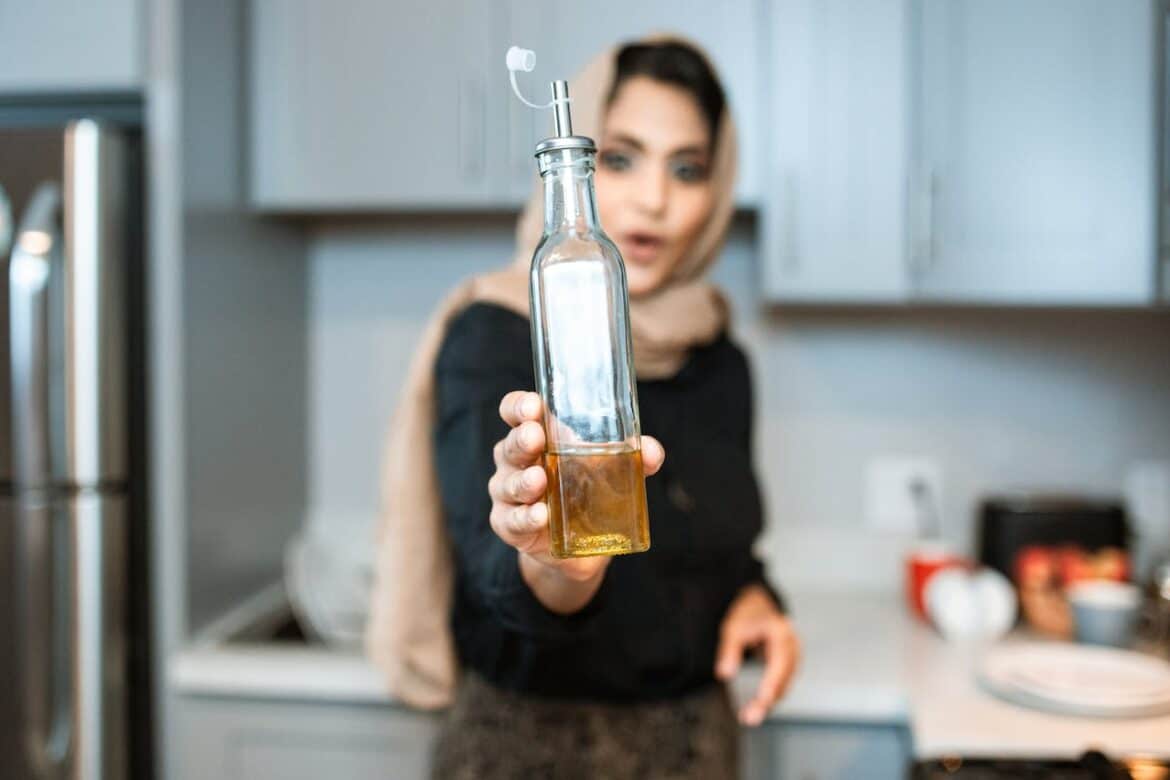
Authenticity is often a concern when buying olive oil. To ensure you are getting genuine olive oil, consider the following:
- Look for seals of approval or certifications that indicate quality.
- Buy from reputable producers and brands with a track record of producing high-quality olive oil.
- Check the label for the olive oil’s harvest date and origin.
- Be cautious of unusually low prices, as very cheap olive oil may not be of good quality.
Following are some of the top authenticity seals and certifications for olive oil:
International Olive Council (IOC) Certification
The International Olive Council (IOC) is one of the most well-respected organizations in the olive oil industry. Their certification sets international standards for olive oil quality and authenticity. This certification is highly regarded and can assure consumers of the quality and origin of the olive oil.
PGI and PDO Labels
Protected Geographical Indication (PGI) and Protected Designation of Origin (PDO) labels are certifications that highlight the olive oil’s geographical origin. These designations ensure that the olive oil was made adhering to the region’s strict quality standards.
USDA Organic Certification
If you want to buy organic olive oil, look for the United States Department of Agriculture (USDA) certification. It ensures that the olives used in the oil are grown without synthetic fertilizers or pesticides, promoting a more environmentally friendly and natural product.
North American Olive Oil Association (NAOOA) Seal
The North American Olive Oil Association provides the NAOOA Seal. It assures that the olive oil exceeds the international standards for EVOO.
Non-GMO Project Verified
Non-GMO Project Verified certification ensures that the olive oil is free from genetically modified organisms. This is important for consumers who prefer natural, unaltered products.
Top Olive Oil Brands
Following is a list of NAOOA-approved olive oil and EVOO brands:
- Aldi
- Colavita
- Botticelli
- Filippo Berio
- Goya
- Guillen
- Iliada
- La Tourangelle
- Moresh
- Napa Valley Naturals
- Olitalia
- Origin 846
- Pompeian
- Primal Kitchen
- Sprouts
- Scalifani
- Star
- Terra Delyssa
- Whole Foods
- U.S. Foods
- Zoe
In conclusion, EVOO is far superior to pure olive oil, which contains traces of chemicals. The former is perfect for drizzling on salads and the latter can be used for drying and baking. For health-conscious individuals, EVOO is a better choice. However, remember to exercise portion control because a tablespoon of EVOO contains 126 calories, which can add up quickly if you are consuming it three times a day.
Get high-quality olive oils from Maverick Oils. Visit their website to know more about how they harvest their olive oil. Click here for a quote or call +1 (888) 516-8881.
Meta Title: A Guide to Using Olive Oil in the Kitchen and for Your Skin
Meta Description: Olive oil can be used in the kitchen, for your skincare routine and for cleaning purposes. Click here for an in-depth guide for its uses.
Keywords: Olive oil, uses of olive oil, culinary uses, skincare uses
Uses of Olive Oil

Olive oil is known as the healthiest oil in the world. According to a study published in the Journal of the American College of Cardiology, people consuming olive oil tend to live longer because they are not at risk of developing circulatory or heart disease, or cancer.
There are two common types of olive oil, including pure olive oil and extra virgin olive oil (EVOO). The former is made from a filtering process that involves the use of chemicals, whereas the latter is cold pressed, giving you high-quality olive oil.
People mostly know about the culinary uses of olive oil, and that too in a small capacity. This liquid gold from the Mediterranean is also used for skincare and miscellaneous things around the house.
Let’s dive deep into the uses of olive oil and how they can simplify your life:
Culinary Uses
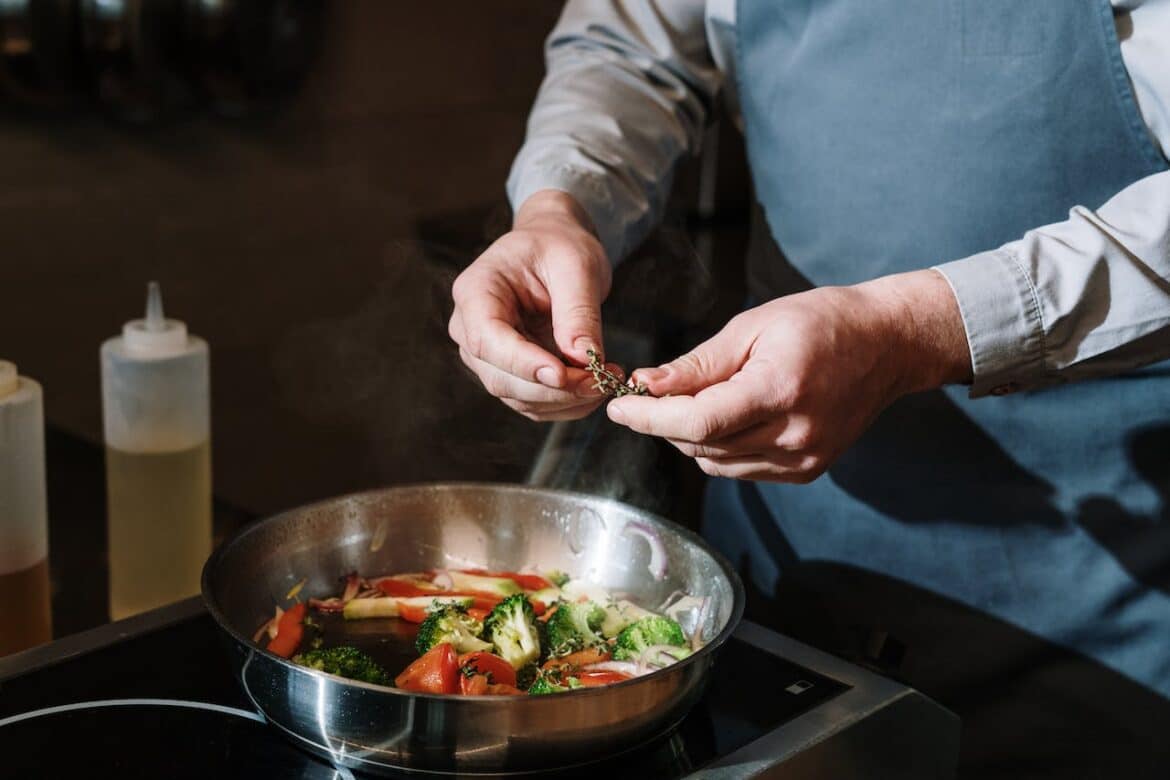
Salad Dressings: One of the most common culinary uses of olive oil is in salad dressings. Extra virgin olive oil, with its robust and fruity flavor, adds depth to your salads. When paired with balsamic vinegar or any other acidic condiment, it creates a sweet-sour vinaigrette that can transform a simple salad into a culinary delight.
Sautéing and Frying: Olive oil has a high smoke point, which varies depending on the type of olive oil you are using. Pure olive oil has a smoke point of 375°, which makes it a good option for deep-frying and baking. Extra virgin olive oil has a low smoke point and is richer in flavor, making it an excellent choice for sautéing vegetables and drizzling. It is also a healthier alternative to many other cooking oils, thanks to its high levels of monounsaturated fats.
Drizzling: For an elegant touch, drizzle extra virgin olive oil over dishes just before serving. This enhances the dish’s presentation and adds a burst of flavor. It’s particularly popular on dishes like grilled vegetables, pasta, and soups.
Dipping Sauce: In Mediterranean cultures, it’s customary to serve a dish of olive oil for dipping with fresh bread. To create a delicious dipping sauce, simply mix extra virgin olive oil with spices, herbs, lemon juice, and garlic for an added punch. This simple yet flavorful concoction can be served as an appetizer or accompaniment to various dishes in different cuisines.
Baking: While olive oil is often associated with savory dishes, it can also be used in baking. In Middle Eastern and Mediterranean baking, olive oil is a common ingredient in recipes like focaccia bread and cakes. Not only does it add flavor to the dish, but also moisture. When using olive oil in baking, it’s essential to select a light or mild olive oil to avoid overpowering the sweetness of your treats.

Marinades: Olive oil is a key ingredient in marinades for vegetables, meats and seafood. The oil helps tenderize the protein while infusing it with flavor. For a basic marinade, combine olive oil with herbs like oregano, rosemary, and thyme. This mixture can be used to marinate chicken, beef, lamb, or even tofu.
Roasting: Roasting is another culinary application of olive oil that yields delectable results. Coat vegetables, potatoes, or whole poultry with olive oil to help them achieve that irresistible golden-brown crispiness. The oil also prevents the food from drying out during the roasting process. The choice of olive oil can influence the final flavor of your dish, with extra virgin varieties imparting a richer taste.
Pesto: Pesto is a traditional Italian sauce with the key ingredient olive oil. To make pesto, you will need olive oil, garlic, fresh basil, Parmesan cheese, and pine nuts. The oil binds the ingredients and provides a creamy, smooth texture. This sauce can be added to pasta, used for grilling meats, and spread on sandwiches.
Infused Oils: Infused olive oils are a culinary delight. These are created by infusing olive oil with various flavors like garlic, chili peppers, or herbs. To make infused oil, warm the oil and add your chosen ingredients. Let it sit for a few days to allow the flavors to meld. The result is a custom oil that can be used in a wide range of dishes.
Finisher for Stews: A little bit of extra virgin olive oil as a final touch can work wonders for stews. One of the reasons olive oil is added as a garnish is because it releases polyphenols, which help lower blood pressure and promote good circulation.
Antipasti and Tapas: Antipasti and Tapas are integral components of Italian and Spanish cuisine. The former is a first course, whereas the latter is an appetizer, which is olives marinated in olive oil, spices, and herbs and served in a bowl to refresh your palate.
Grilling Meats: Olive oil is often used to coat meats before they hit the grill. This imparts a delightful smokiness to the food and prevents it from sticking to the grill. The smoky, charred flavors of grilled items pair perfectly with the fruity notes of olive oil.
Preserving Foods: Extra virgin olive oil isolates food from the air, which leads to oxidation. It creates an air-tight seal that prevents mold. Herbs, vegetables, and even cheese can be submerged in olive oil to extend their shelf life while imparting unique flavors. Feta cheese and sun-dried tomatoes preserved in olive oil with spices and herbs are notable examples.
Olive Oil and Skincare

Benefits of Olive Oil for the Skin
Olive oil is known for its rich composition of vitamins, antioxidants and essential fatty acids, making it a valuable addition in skincare products. Before discussing its uses in this area, here are a few key properties of olive oil that make it an excellent ingredient for maintaining radiant and healthy skin:
- Moisturizing: Olive oil contains fatty acids that help lock in moisture and prevent your skin from drying out. This is particularly beneficial for people with dehydrated skin.
- Anti-Inflammatory: Olive oil has anti-inflammatory properties that soothe inflamed and irritated skin. This makes it a suitable option for people with conditions like psoriasis or eczema.
- Antioxidant-Rich: The antioxidants in olive oil, such as polyphenols and Vitamin E, protect the skin from free radical damage. This is the culprit that accelerates skin aging, damaging it in the process.
- Exfoliation: When combined with natural exfoliants like salt or sugar, olive oil creates a nourishing and gentle scrub. This removes dead skin cells, leaving your skin feeling smooth and soft.
- Cleansing: Olive oil is an effective natural cleanser. It can dissolve sunscreen, makeup, and other skin impurities without stripping away natural oils. This is why most people prefer skincare products with olive oil for double cleansing.
Skincare Uses
Makeup Remover: Apply a small amount of olive oil to a cotton pad and gently wipe away makeup, including waterproof mascara. Its moisturizing properties will leave your skin feeling clean and hydrated.
DIY Face Massager: Apply a small amount to your dry face, massage it in, and then rinse with warm water. This will help maintain your skin’s elasticity and keep it firm. For deep hydration, apply it in the morning and before bedtime.
Body Moisturizer: Extend the moisturizing benefits of olive oil to your body by applying olive oil to your damp skin. It will lock in the moisture, leaving your skin supple and soft.
Face Mask: Create a hydrating face mask by mixing olive oil with ingredients like avocado, honey, or yogurt. Its antioxidant properties will protect your skin from environmental damage and give it a natural glow.
Lip Balm: Olive oil is an effective remedy for chapped lips. Apply a small amount to your lips to prevent dryness and keep them soft. Its hydrating properties will also reduce pigmentation.
Cuticle Oil: Massaging olive oil into your cuticles keeps the nail bed moisturized and hydrated. This prevents your nails from becoming brittle and dry.
Hair Conditioner: Olive oil is rich in antioxidants and minerals that deeply moisturize and nourish the scalp, preventing flakiness and dryness. A clean scalp is able to absorb nutrients fully, which promotes hair growth. It helps to condition and strengthen your hair, leaving it shiny and more manageable.
Tips for Using Olive in Your Skincare Routine
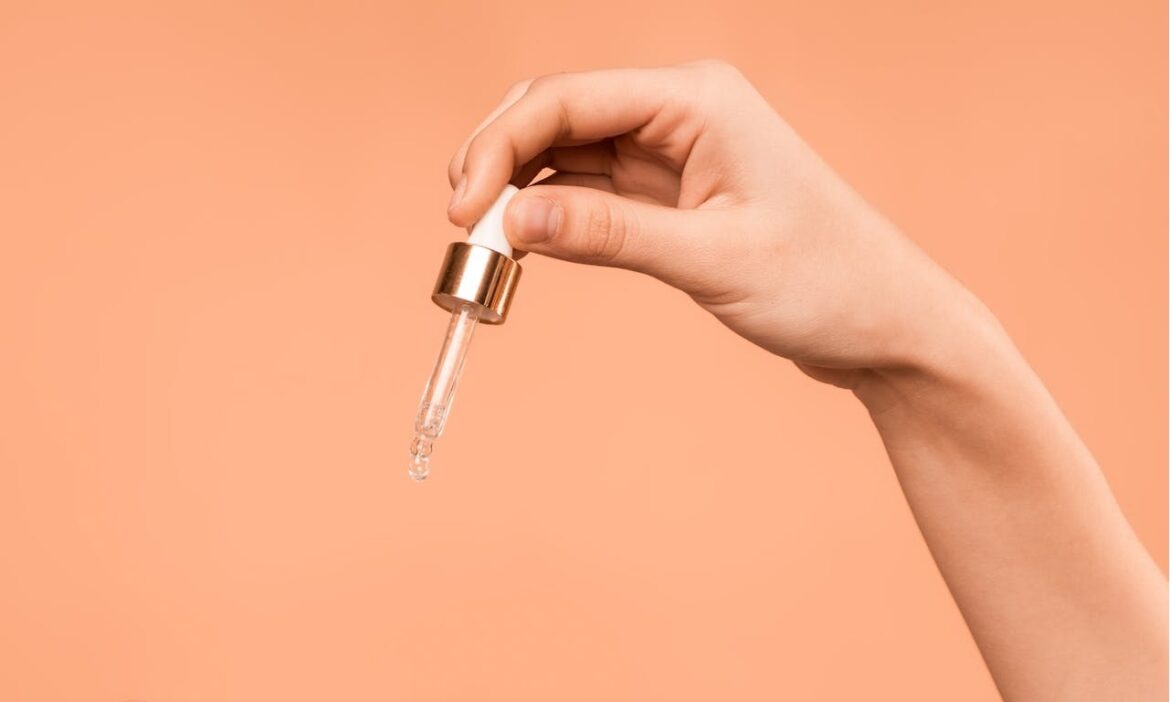
While olive oil can be a fantastic addition to your skincare routine, there are some precautions to keep in mind:
- Select High-Quality Olive Oil: Opt for extra virgin, as it retains more of its beneficial properties compared to refined versions.
- Patch Test: Before using olive oil on your face, always do a patch test to ensure you don’t have an adverse reaction.
- Moderation: A little goes a long way. You don’t need to drench your skin in olive oil. A few drops are sufficient for moisturizing.
- Remove Excess Oil: If you find that olive oil leaves your skin feeling too greasy, gently blot the excess with a tissue.
- Consult a Dermatologist: If you have specific skin conditions, consult a dermatologist before incorporating olive oil into your skincare routine.
Household Uses
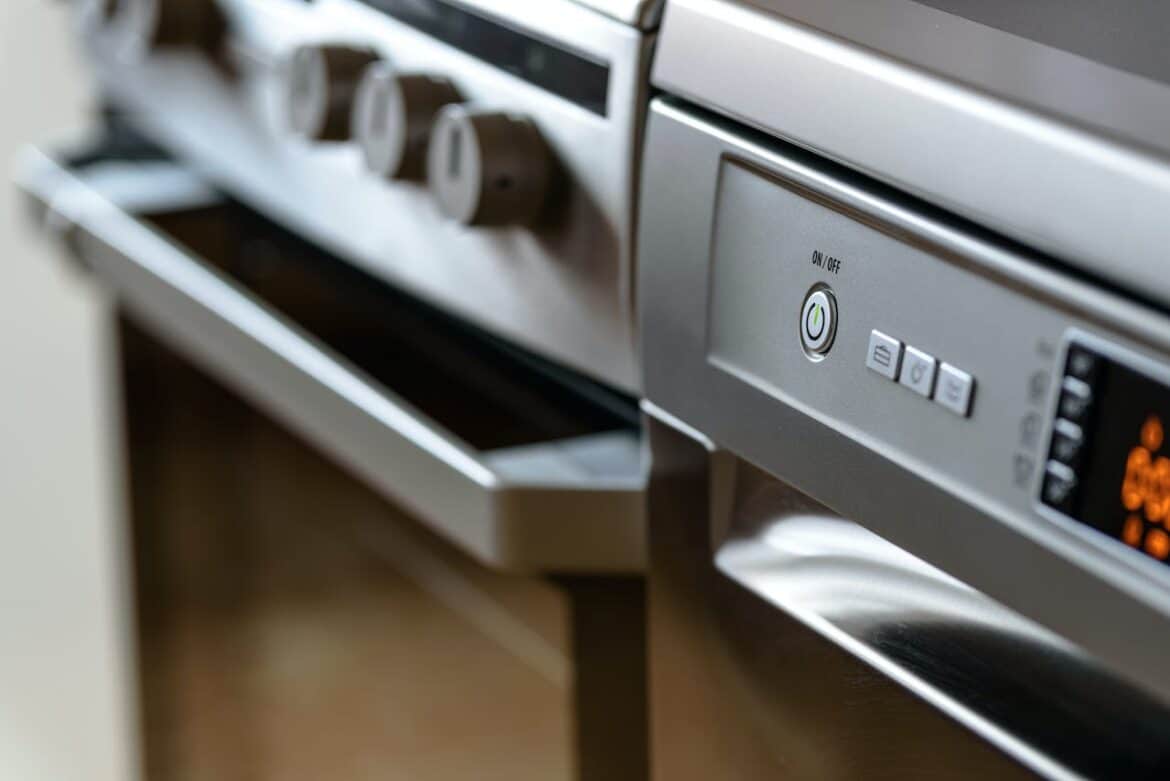
From personal care to cleaning, olive oil is a valuable addition to your daily life. We have already discussed at length it’s uses in the kitchen and why you should include it in your skincare routine. Next are its uses for miscellaneous things around the house.
Wood Furniture Polish
Olive oil is a natural and effective wood polish. It opens up the wood fibers and deepens their color. Mix olive oil with a little vinegar and apply it to your wooden cabinets, tables, or chairs. It not only adds a beautiful shine but also nourishes the wood, preventing it from drying out and cracking.
Leather Conditioner
If you own high-quality leather items like bags, shoes, or belts, you probably keep them wrapped in tissue paper to preserve their beauty. If there are scratches on them, use olive oil to clean them. As a natural moisturizer, olive oil helps restore luster. Gently rub a small amount on the scratch and see the magic unfold.
Stainless Steel Cleaner
Tired of seeing fingerprints and smudges on your stainless-steel appliances? A few drops of olive oil on a soft cloth can help you wipe them away and leave the surfaces gleaming. In fact, it creates a protective layer that prevents dust from accumulating on the appliance. This is what makes olive oil an eco-friendly and cost-effective alternative to store-bought cleaners.
Pet Care
If you have pets, olive oil can be beneficial for their overall health. Mixing a small amount with their food supports bone health, improves their coat’s shine, aids in digestion, strengthens the immune system, and reduces plaque. It’s essential to consult with your veterinarian for the proper application and dosage.
Removing Labels and Stickers
We all have struggled with sticky residue left behind by stickers. Olive oil can be your secret weapon to remove the half-torn and stuck mess. Apply a small amount to the residue, let it sit for a few minutes, and gently rub it away. It works like a charm and is much gentler than harsh chemicals.
Lubricant for Kitchen Appliances
Stiff kitchen appliances and stuck doors can be a nuisance. A few drops of olive oil on the hinges will banish that annoying squeaking noise and get the parts moving parts freely.
Shaving Cream Substitute
Did you forget to buy shaving cream on your last visit to the superstore? No worries! Grab the bottle of olive oil from the kitchen and use it to get silky, smooth hands and legs. Olive oil provides a soft surface for the razor and prevents irritation and razor burns.
Earwax Removal
While olive oil makes for a good ointment to remove earwax, we advise you to use it with caution. Warm a small amount of olive and use a dropper to add a few drops into your ear. This will soften the wax and make it easier for you to remove it.
Homemade Candles
Olive oil can also be used for creative projects, such as candle-making.
Simply fill a glass container with extra virgin olive oil, insert a wick, and light it. The low smoke point of EVOO makes it an eco-friendly option to create an inviting and warm atmosphere in your home.
Rust Prevention
Olive oil prevents oxygen from entering the metal’s pores, protecting it from rust. Apply a thin layer to items like kitchen knives or gardening tools to keep them rust-free.
DIY Cleaning Products
Olive oil, when combined with other common household items like lemon juice and vinegar, can be a key ingredient in DIY cleaning solutions. Oleic acid in olive oil is excellent at breaking down and dissolving grease and grime, making it a powerful cleaning agent.
And there you have it – an exhaustive list of the uses of olive oil. So, now you know that your culinary creations in the kitchen, the morning and bedtime skincare routine, and miscellaneous things in the house demand olive oil. This liquid gold will improve your life from head to toe and the house with its décor.
Maverick Oils offers different types of high-quality olive oils that can be used for all the purposes mentioned above. For more information about their oils, browse their website or call +1 (888) 516-8881.


